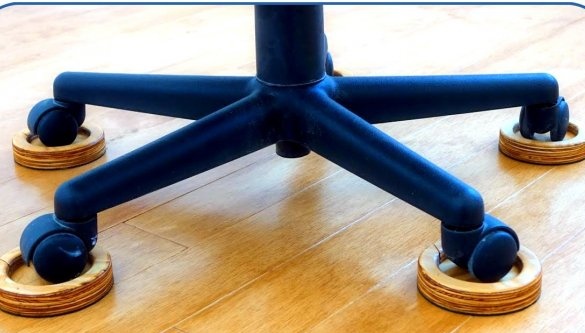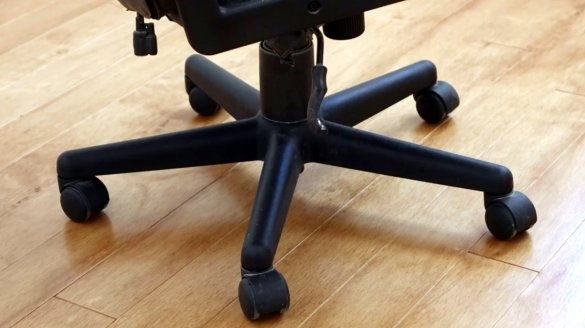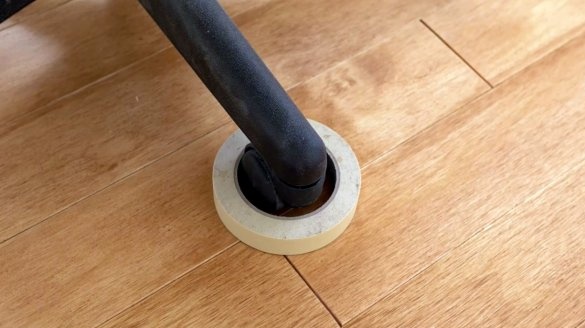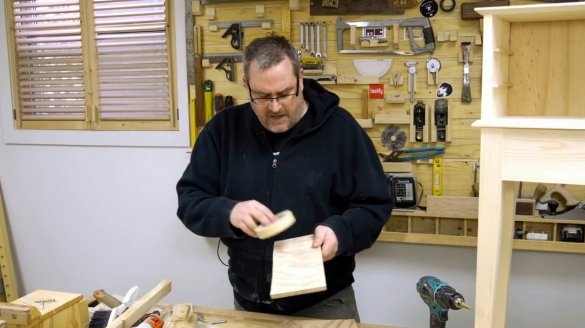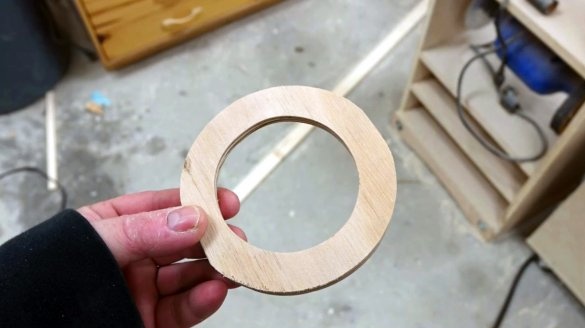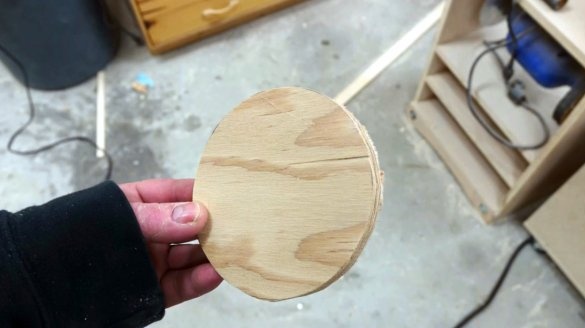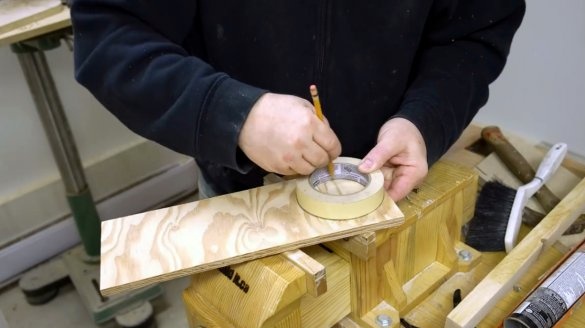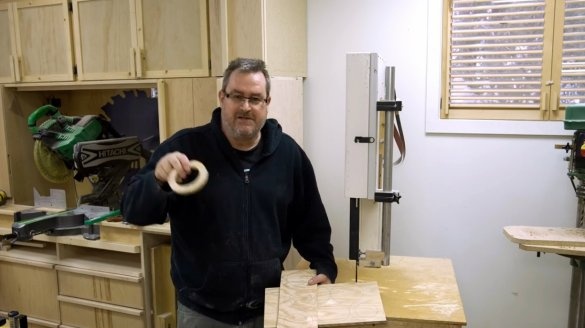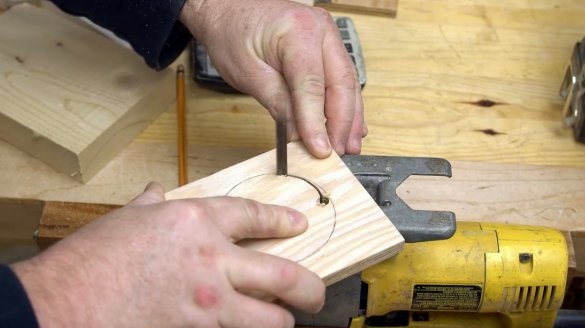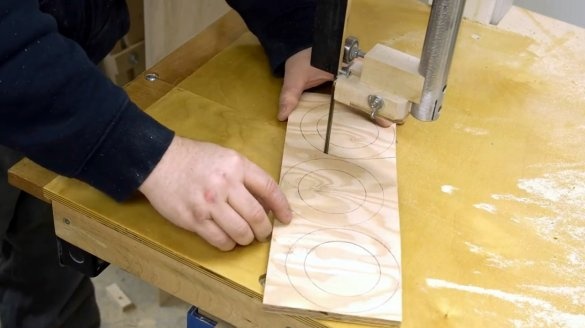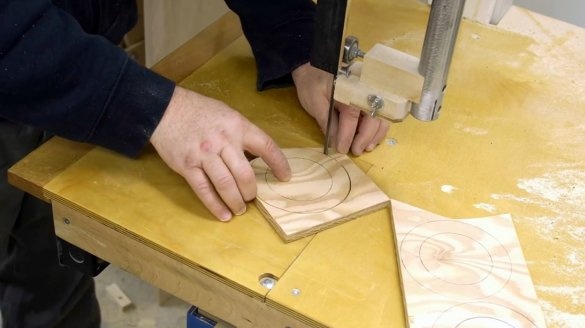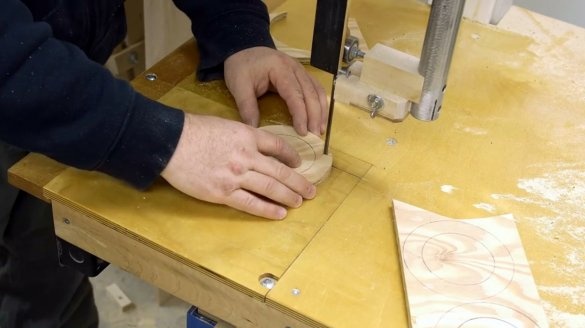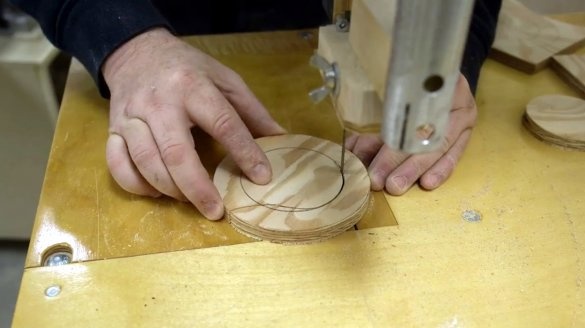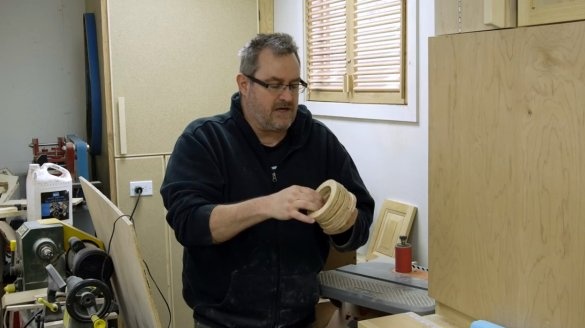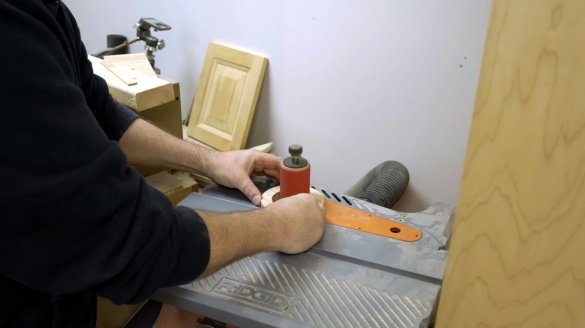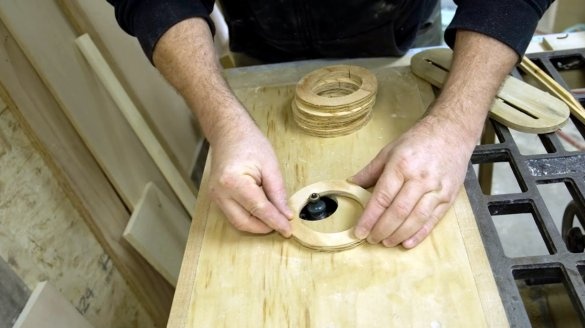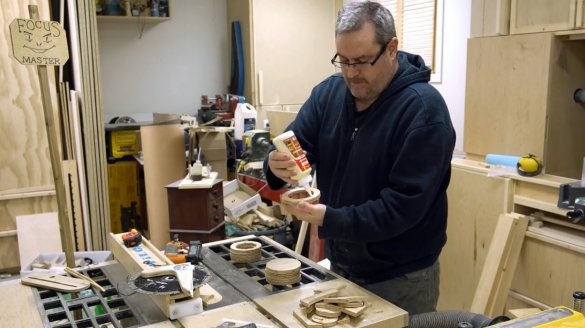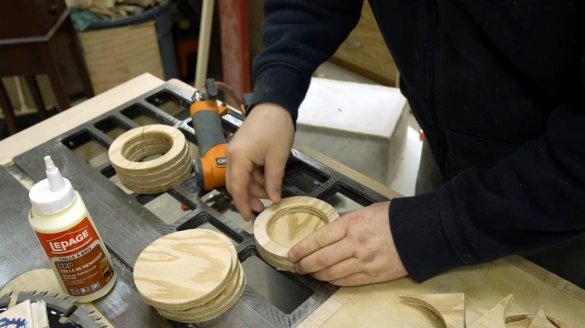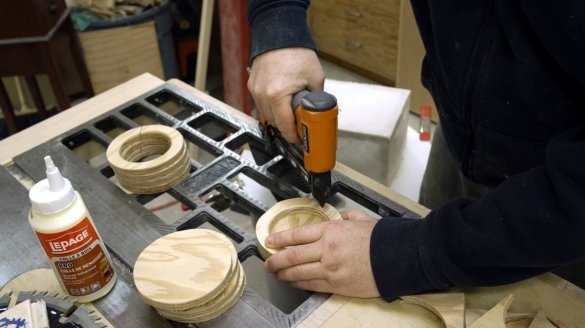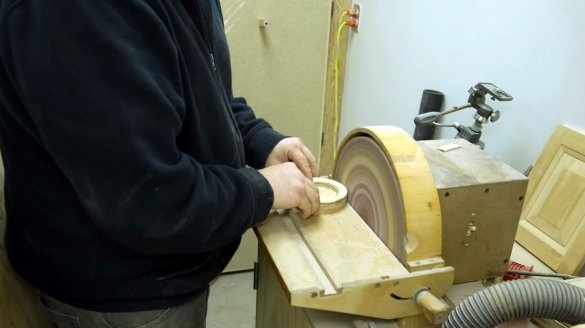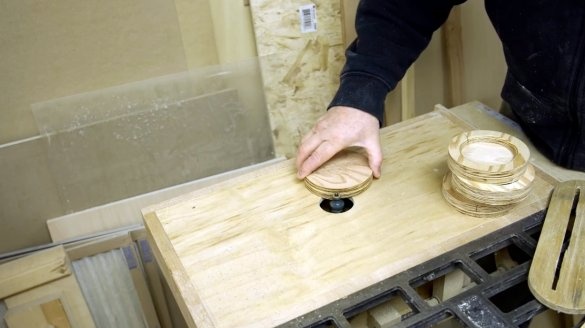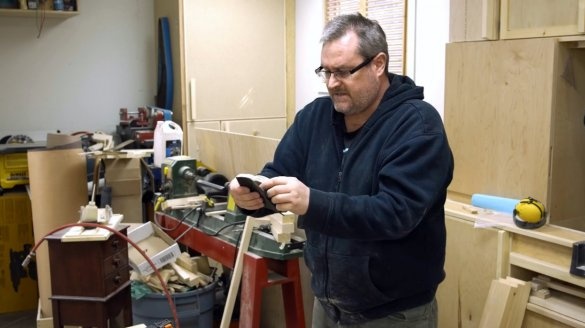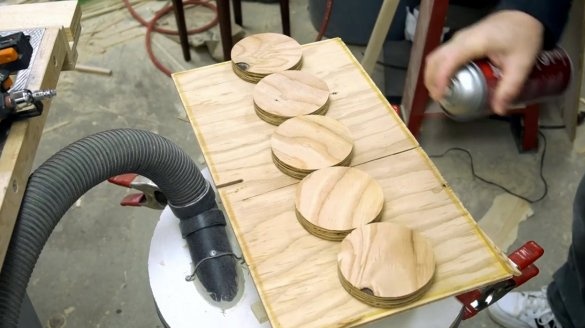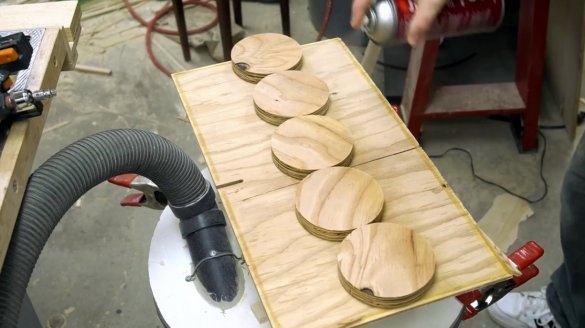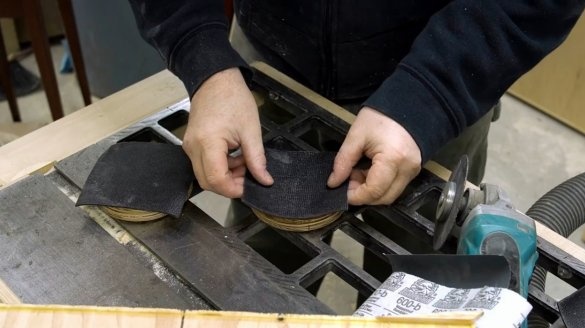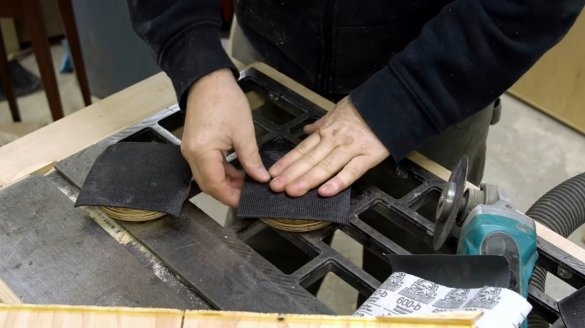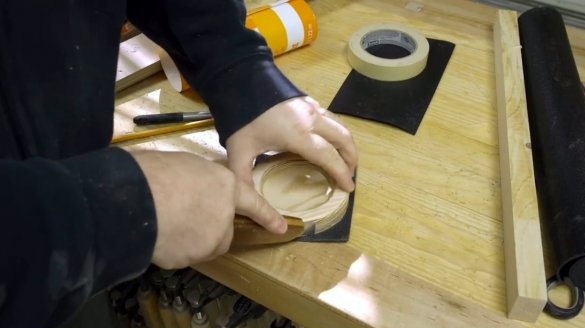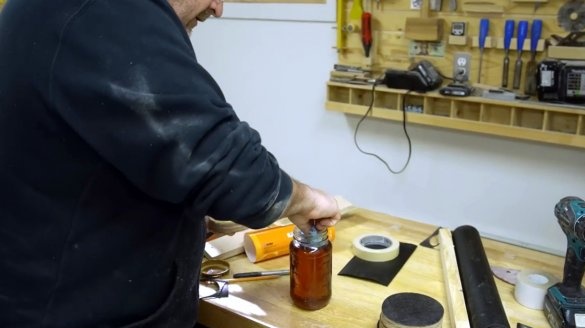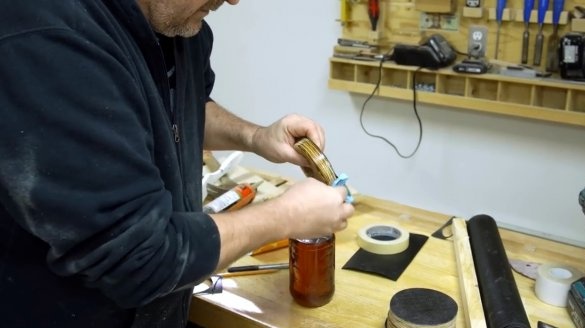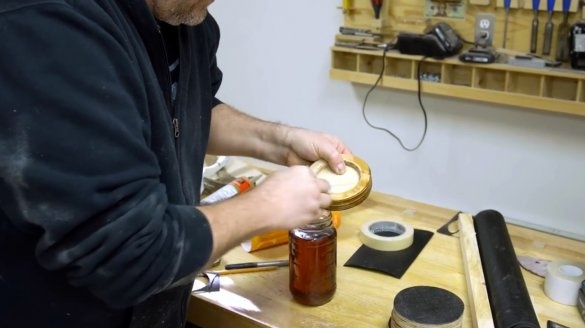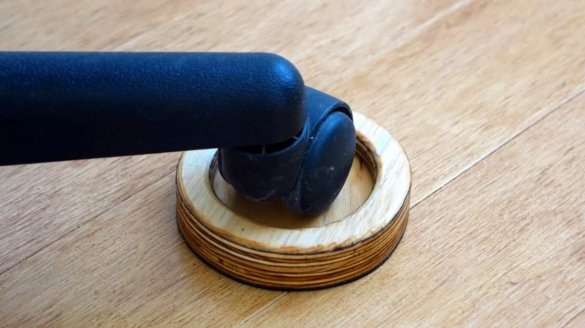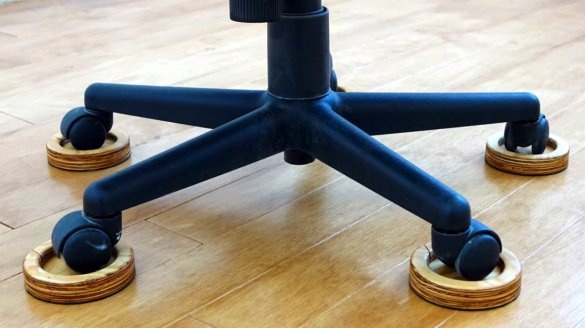If you ever had office chairs with castors on legs, then you probably paid attention to such an effect as over time they roll quite noticeable indentations even in hardwood floors. This effect occurs due to the small contact plane of the wheels. But the chair does not always need to be moved on the surface, just a simple rotation around the axis is enough.
In this article, the author of YouTube channel “I Build It Home” will tell you how he made protective fixtures for wheels with rollers.
This is a very simple homemade product, for the manufacture of which complex machines are not needed, an ordinary hand tool is enough.
Materials
- sheet plywood
- PVA glue
- Aerosol contact adhesive
— .
Instruments, used by the author.
- Orbital and drum grinding machines
—
—
—
—
—
- Ruler, knife, marker.
Manufacturing process.
This project is precisely aimed at preventing wear of the floor covering, that is, it has an aesthetic and practical character.
Small roller coasters are a great solution. At the same time, they block the movement of the chair, because not everyone likes spontaneous movement.
For the outlines of the coasters, the diameter of the roll from the masking tape unexpectedly came up.
The author uses a piece of plywood as the main material. Draws the contours of five stands, the outer and inner diameters.
All work is carried out on a band saw, although a commonplace electric jigsaw, or a circular saw, would be suitable for this.
After that, the author quickly overwrites the sharp edges of the plywood circles on a drum and orbital sander.
And then it processes the upper faces of the ring on a milling machine with a radius mill with a thrust bearing.
Stands and rings can now be glued together. For this, ordinary wood glue is suitable. The author additionally fastens both parts with a neiler while the glue dries.
Then again grinding and alignment of the ends of the workpieces follows.
The following is the processing of the lower faces of the ring on a milling machine.
To crown it all, the master has a special rubber sheet that prevents slipping. John glues it to the underside of the coasters using an aerosol contact adhesive.
Excess material is cut with a knife.
The topcoat for these stands may vary. They can be painted black to match the rollers and legs of the chair. But the author opens them with a layer of linseed oil, due to which the plywood darkens somewhat and acquires a tone similar to the color of the floors. In addition to aesthetic properties, this oil also gives a certain degree of protection against moisture, and this is important, because the floors will be washed.
Such coasters can also be made of solid wood. They will look even better.
Thanks to the author for the simple but interesting idea of locking the seat rollers!
All good mood, good luck, and interesting ideas!
Author video can be found here.

